Plenary Report

戴民汉
Talk title: 海洋带复杂系统临界动力学
Bibliography:戴民汉,中国科学院院士,美国地球物理联合会(AGU)会士。现任厦门大学校务委员会副主任、地球科学与技术学部主任、讲席教授。基金委青年项目A类(原国家杰出青年科学基金项目)获得者,长江学者特聘教授。曾任表层海洋-低层大气国际研究计划(SOLAS)科学指导委员会共同主席,现任中国环境与发展国际合作委员会委员、海洋经济可持续发展高级别小组(由14位现任政府首脑发起)专家组成员、联合国政府间海洋学委员会全球海洋氧气网络专家组成员。
长期耕耘于海洋生物地球化学研究,专长于海洋碳汇观测及碳循环研究,是国际知名的海洋碳循环专家。在Science, Science Advances, Nature Geoscience/Climate Change/Ecology & Evolution/Communications等国际权威期刊发表论文280余篇,为Elsevier中国高被引作者。作为负责人连获三期基金委创新研究群体资助,主持973海洋碳循环项目2项、基金委重大项目1项。领衔联合国“海洋十年”认证的国际科学计划“融通科学、管理和社会参与:助力海岸带可持续发展” (COASTAL-SOS,2021-2030)。曾获教育部自然科学一等奖、全国创新争先奖、亚洲-大洋洲地球科学协会(AOGS)“艾克斯福特奖”、AGU 大使奖。
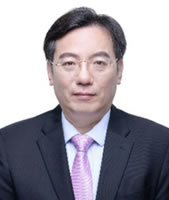
李建平
Talk title: 海-气耦合桥理论与跨洋盆相互作用
Bibliography:李建平,中国海洋大学“筑峰工程”第一层次特聘教授、未来海洋学院院长、深海圈层与地球系统教育部前沿科学中心主任委员会副主任、海洋碳中和中心主任、青岛海洋科学与技术试点国家实验室“鳌山人才”卓越科学家、国家杰青、首届全国百优博士论文获得者、国家973和国家重大研究计划项目首席科学家、美国夏威夷大学兼职教授、国际气候与环境变化委员会(CCEC)主席、国际气候学委员会(ICCL)主席、国际IUGG会士、英国皇家气象学会会士、百人计划、Climate Dynamics执行主编、获国家自然科学二等奖(排名第3)、国务院政府特殊津贴、入选 “Research.com”中国地球科学领军人物奖(2023-2025)、全球最佳地球科学家(2022-2025)、全球前2%顶尖科学家终身科学影响力排行榜单(2020-2024)、路透社“气候变化研究领域全球最具影响力的1000位科学家”、爱思唯尔中国高被引作者(2021-2025)、、、等。从事气候动力学与气候预测研究。发表论文580余篇(其中SCI论文510余篇),编译著10余部,在Google Scholar上被引用次数2.5万余次。在国际会议做特邀报告70余次,组织国际会议及分会90余次。
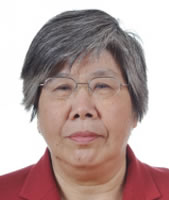
刘秦玉
Talk title: 南海海表温度在季风爆发中所起的作用
Bibliography:刘秦玉教授,女,1968年毕业于山东海洋学院,1981 年12 月毕业于山东大学数学系控制论专业后一直在中国海洋大学从事教学和科研工作,2016年退休。她1993 年曾被国务院学位办批准为博士生指导教师,是我国海洋-大气相互作用领域的学术带头人之一。1986年以来,她在国内外学术刊物上发表学术论文270余篇,曾作为第一完成人分别获2004年2006年教育部自然科学二等奖和教育部自然科学一等奖;2020年获曾呈奎海洋科技奖中的突出成就奖。她的学术成果主要表现在以下几个方面:建立了南海上层海洋环流季节变化的理论框架,发现了南海冬季西边界流导致的印-太“暖池”的豁口,揭示了ENSO控制南海海表温度年际变化的物理本质,该成果已成为研究南海环流的理论基础; 提出并证实在ENSO影响东亚夏季风的过程中,春季热带印度洋“海盆一致模态”充当了一个“电容器”的角色,而秋季热带印度洋偶极子模态与ENSO的配合构成的大气加热场异常是印-太“暖池”影响东亚冬季风的重要机制,该成果为东亚气候季节预报提供理论依据;她带领的团队还在北太平洋副热带模态水形成,副热带逆流的气候效应等北太平洋中纬度海气相互作用研究中做出了重要贡献。

田纪伟
Talk title: 深海中微子与湍流协同观测
Bibliography: 田纪伟,中国海洋大学三亚海洋研究院教授、博士生导师,原国家863计划海洋技术领域海洋监测主题专家组副组长、海洋技术领域专家组专家,国家973项目“南海关键岛屿多尺度动力过程研究”首席科学家。主要从事海洋多尺度动力过程机理研究及以科学问题为导向的海洋高端观测仪器装备研发,包括“海洋锚定混合仪”、“海洋剖面观测系统”等系列新型观测仪器装备;主导了南海潜标观测网等深海观测网的科学设计;在南海多尺度动力过程研究方面取得重要进展,丰富了深海多尺度动力过程研究理论。在Nature子刊、JPO、GRL、JGR等国际学术期刊发表论文近百篇,获国际发明专利4项、国家发明专利8项,主持系列国家级及省部级重点项目,包括国家973计划项目1项、国家自然科学基金重点项目3项、全球变化与海气相互作用专项水体调查项目4项等,享受国务院政府特殊津贴,入选为国家百千万人才工程一二层次。
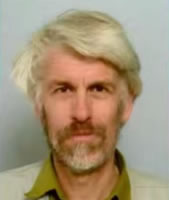
Gert J. de Lange
Talk title: Formation and Preservation of Mediterranean Organic-rich S1 unit; Diagenetic Control and Variability
Abstract: Precession-related humid climate conditions and associated processes determine deposition of organic-rich units (sapropels) in the Mediterranean. In addition, the semi-enclosed basin configuration emphasizes contrasts. This resulted in the repetitive occurrence of distinct sapropels in a climate-controlled way in predominantly eastern Mediterranean marine deposits. The amount of precipitation thus stratified water column conditions is associated with North-African monsoonal system, whereas deep-water formation thus collapsed of a stratified water column is related to the Northern-borderland climate system. The most recent sapropel S1 formed between 10.8 and 6.1 kyr BP. This is largely simultaneous with the African Humid Period (11-5 kyr BP). Deposition of organic-rich S1 sediments occurred synchronously at all water depths below ~ 200 m. Increased monsoonal freshwater input resulted in water column stagnation and in deepwater (>1,800 m) to be devoid of oxygen during 4,000 years of S1. This resulted in basin-wide preservation of S1 determined by water depth. Reduced precipitation and consequent abrupt re-ventilation of deep-water at 6.1 kyr BP resulted in a basin-wide MnO2-peak. Subsequent oxic conditions resulted in a downward progressing oxidation-front that is not only marked by degradation of organic matter over its active pathway, but also by the built-up of a secondary Mn-peak below the first, ventilation Mn-peak. Apart from the major re-ventilation event at the end of sapropel S1 formation, also other, short-term ventilation events have occurred, notably the 8.2-ka cooling event. Sapropel formation mechanisms are related to a sensitive interplay between S- and N- borderland climate systems. Assessing distinct, sub-Milankovitch climate variability is vital for understanding and forecasting future climate change.
Bibliography: Prof. Dr. Gert J. de Lange is a renowned marine geochemist at Utrecht University, the Netherlands. His research focuses on the early diagenetic alteration of paleo-proxies, the interpretation of climatically driven elemental variations in marine sediments, brine composition and origin, redox dynamics across seawater-brine interfaces, and the origin and isotopic composition of methane and pore fluids in mud volcanoes. With nearly 500 publications in leading journals such as Nature, Science, and Nature Geoscience, his work has garnered over 20,000 citations and an h-index of 85. He has served as Editor-in-Chief of Marine Geology (2002–2020), Chair of the International Commission for the Scientific Exploration of the Mediterranean Sea (CIESM, 2007–2013), and Chair of the Dutch Society for Sedimentary Geology. As a principal investigator, he has led multiple ERC- and NWO-funded projects and organized numerous oceanographic research expeditions. In recognition of his contributions, he was named a Geochemical Fellow by the Geochemical Society and the European Association of Geochemistry in 2015, and elected a Fellow of the American Geophysical Union in 2019.

J. Paul Liu
Talk title: 人工智能在海洋地学方面的应用--实例与展望”
Bibliography: Dr. Paul J. Liu is a Professor of Marine Geology at North Carolina State University, Director of International Affairs in the College of Sciences, and Provost Faculty Fellow. He is internationally recognized for his pioneering research on Asian mega-deltas, climate change, and source-to-sink sediment processes. Over the past two decades, Dr. Liu has led nearly 30 major oceanographic expeditions as Chief Scientist, investigating sediment fluxes and coastal evolution in the world’s great river systems including the Yellow River, Yangtze River, Taiwan’s Zhuoshui and Lanyang Rivers, the Pearl River, Vietnam’s Red and Mekong Rivers, Thailand’s Chao Phraya River, Myanmar’s Ayeyarwady and Salween Rivers, and the Ganges. His highly cited publications have significantly advanced understanding of river-delta evolution under the combined forces of climate variability and human activities.
In recent years, Dr. Liu has focused on the integration of Artificial Intelligence and Large Language Models (LLMs) in geoscience research and education. He teaches the graduate student course Generative AI for Science at NC State University and has conducted LLM training workshops for the NC State Bioinformatics Research Center and the Research Triangle AI Society. He is the co-developer of Ocean-AI and Ocean-GPT autocoding platforms, which aim to create intelligent agents capable of querying, analyzing, and visualizing large-scale environmental datasets. His current work represents a forward-looking vision of how AI can transform ocean geoscience research and global collaboration.
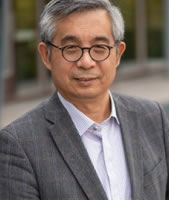
Zhengbing Wang
Talk title: Historical development of the Dutch coastal system and implications for morphodynamic modelling
Bibliography:Zhengbing Wang教授是荷兰三角洲研究院高级水利工程师,代尔夫特理工大学教授,研究领域为河口海岸和泻湖的动力地貌。他致力于开发模拟河口环境的泥沙输运和地貌演变的软件,研究海平面上升对海岸的影响,参与多个国际合作项目、涵盖河流、河口和海岸地区的水动力、泥沙运输、地貌和环境影响。在中荷的合作中,发起和主持多个与三角洲、潮间带、气候变化和人类活动等研究相关的项目。王正兵教授任《International Journal of Sediment Research》副主编,担任International Conference on Estuar-ies and Coasts 2009科学委员会成员。他先后在Nature Geo.science、Coastal Engineering、Marine Geology等国际期刊发表190余篇SCI期刊论文,获英国土木工程师协会海外奖。所发表文章总引超过7000次,H-index46,出版专著2本。
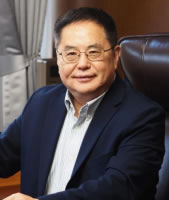
Fei CHAI
Talk title: Designing and Modeling Ocean Iron Fertilization Experiments
Bibliography: Prof. Fei CHAI received his Ph.D. from the Nicholas School of the Environment at Duke University in 1995. He was a faculty member at the University of Maine from 1994 to 2021, and he became Professor Emeritus in 2021. In September 2022, Prof. Chai has been appointed as a Chair Professor at Xiamen University. He studies physical and biological processes contributing to the global carbon cycle, ocean acidification, open ocean and coastal hypoxia, climate variability affecting marine ecosystems and fisheries, and marine-based carbon dioxide removal (mCDR). Prof. Chai is an expert in developing and testing physical-biological models and using models along with observations from multiple platforms including BGC-Argo and satellite remote sensing to address key regional and global questions and issues, especially related ocean iron fertilization and other ocean-based CDR methods. He led and participated in over 40+ large interdisciplinary research projects, and he has published over 230+ papers in international journals with Google Scholar citations being 13500+ and h-index being 62. Prof. Chai serves as committee chair and member for several international scientific organizations and programs such as TPOS, NPOCE, and BGC-Argo, promoting interdisciplinary research and international collaboration. He has been recently selected as Co-Chair for the Digital Twins of the Ocean (DITTO), and also appointed as a trustee member of the Partnership for Observation of the Global Ocean Charitable Incorporated Organization (POGO).

张传伦
Talk title: 古菌地球生物学跨尺度系统性研究(暂定)
Bibliography: 张传伦,南方科技大学海洋与工程系讲座教授和国家特聘教授(2012-至今)。1994年获得美国德州农工大(TAMU)博士学位,1994-1998年在美国橡树岭国家实验室从事博士后研究工作;1998年起历任美国密苏里大学副教授,美国佐治亚大学海洋系副教授,终身教授;2008年至2016年,兼任同济大学海洋学院讲座教授,2017-1月起任职南科大并兼任教学系副主任,2019创立了“深圳海洋地球古菌组学重点实验室”,致力于古菌生态、地球化学及生命演化的研究和人才培养。
主要研究方向为微生物(特别是古菌)在环境及能源、地质历史演化及全球变化中的作用。在国际地球科学和生命科学期刊上(包括“Science”、“PNAS”、“Nat. Ecol. Evol.”、”Mol. Biol. Evol.”、“Geology”、“Geochim. Cosmochim. Acta”、“ISME J”、“Environ. Microbiol.”)发表学术论文300余篇,Google Scholar引用超过14124次,H-index为67。目前担任欧洲“微生物前沿-古菌生物学(Frontiers in Microbiology-Biology of Archaea)”期刊主编, “古菌(Archaea)”和“中国科学:地球科学”期刊编委。2020、2022和·2023年连续入选美国斯坦福大学发布的“全球前2%顶尖科学家”榜单。
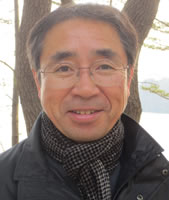
Hidekatsu Yamazaki
Talk title: High-frequency observations of plankton and particle abundance from a cabled observatory off Japan
Abstract: In August 2014, a cabled observatory was deployed in the coastal waters off Oshima Island, south of Tokyo, Japan, and operated continuously until September 2018, providing a four-year dataset of oceanographic properties and plankton abundance at a fixed location. This study highlights the variability of key physical and biological parameters observed during two distinct periods of this time series. Data were collected using a suite of instruments, including thermistor chains, an ADV, ADCP, CTD, turbidity and fluorescence sensor, PAR sensor, wave height gage, and CPICS (a plankton imaging system). From these observations, we calculated the kinetic energy dissipation rate over time and examined its correlations with plankton abundance, aggregate abundance, and plankton diversity. Our results demonstrated that temperature fluctuations followed a -5/3 power-law spectrum, consistent with turbulence theory, while plankton diversity, quantified via the Shannon index, exhibited a power-law spectrum with a slope of -1 (f⁻¹), characterized by a daily peak corresponding to zooplankton diel vertical migration. Long-term measurements of turbulence remain rare but are crucial for understanding seasonal, annual, and interannual variability in plankton and particle dynamics. Our findings underscore the critical role of ocean mixing in shaping the size distribution and abundance of plankton and marine aggregates, offering valuable insights into the coupling between physical and biological processes in coastal ecosystems.
Bibliography: Hidekatsu Yamazaki is Emeritus Professor of Tokyo university of Marine Science and Technology, He received Ph.D. in Ocean Engineering from Texas A&M University in 1984. He worked at Department of Oceanography, Naval Postgraduate School (NPS) and switched his expertise from ocean engineering to oceanography. His interest in oceanic microstructures, particularly turbulence and plankton, started at NPS. He also worked at Chesapeake Bay Institute, Johns Hopkins University and School of Earth and Ocean Science, University of Victoria before he returned to Japan in 1993. He joined Sun Yat-Sen University in March 2024. His research spans from oceanic microstructures to fisheries ground environments as well as various biophysical coupling problems, particularly plankton and marine aggregates.
